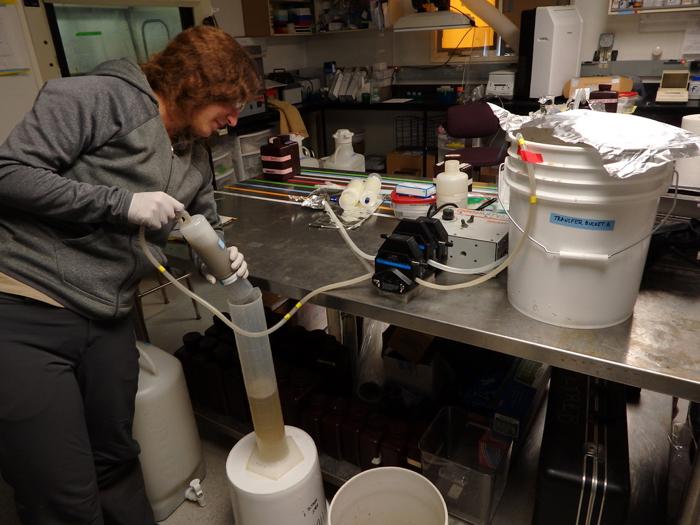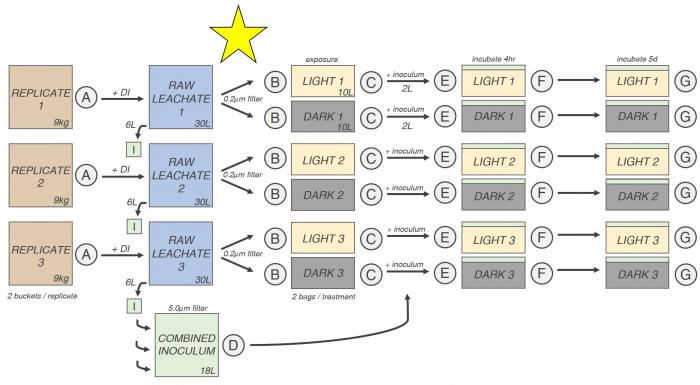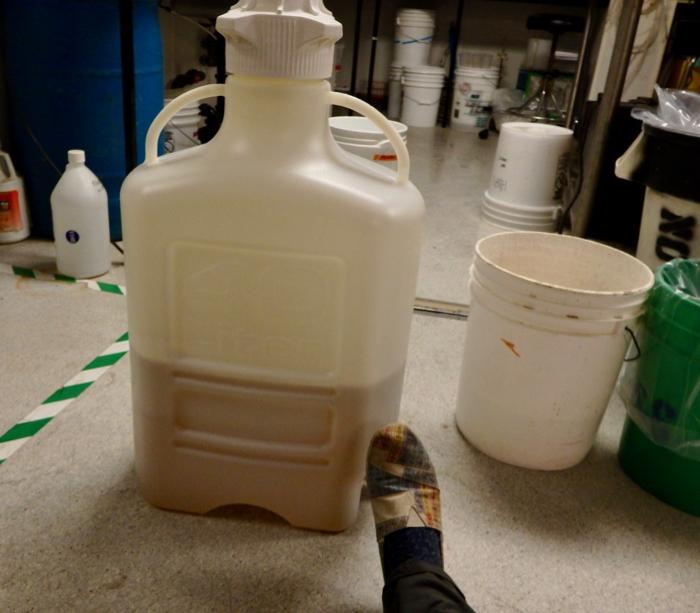Photo-Bio Part 3: Filtering the Permafrost Leachate
Toolik Field Station, North Slope, AK
June 14, 2019
Photo of the Day:
 Graduate student Natasha Christman (Oregon State University) uses a 0.2 micron filter to remove finer particulate matter and microorganisms from the raw permafrost leachate. Toolik Field Station, North Slope, AK.
Graduate student Natasha Christman (Oregon State University) uses a 0.2 micron filter to remove finer particulate matter and microorganisms from the raw permafrost leachate. Toolik Field Station, North Slope, AK.
As a preface to this post, you’ll benefit from reading my overview of the photo-bio project and my reports on Part 1 and Part 2. It’s important to pay attention to the key independent variables:
- Soil Type - Surface layer (organic mat) soil vs. permafrost
- Sunlight Exposure - Dark control vs. sunlight-exposed.
After incubating the permafrost in water for 72 hours (solid-liquid extraction), the next step was to filter the resulting raw leachate. I’ve starred (yellow) our current location on the below flow chart of the photo-bio experimentation process.
 Timeline of the processing of soil samples for the photo-bio research project this summer. What we're currently doing, filtration of raw permafrost leachate, is starred (yellow). Image Source: Natasha Christman (Oregon State University).
Timeline of the processing of soil samples for the photo-bio research project this summer. What we're currently doing, filtration of raw permafrost leachate, is starred (yellow). Image Source: Natasha Christman (Oregon State University).
First, we filtered the raw leachate through a 200 micron (coarse) filter. The goal here was to remove the larger particulate matter that would clog the system during later, finer filtration. After this filtration, the leachate still looked like chocolate milk, but it didn’t have any macroscopic particulate matter. Here’s a video in which I explain the process in more detail:
The coarse filtrate was taken from the cold room to the lab for fine filtration. This involved pumping it through a 0.2 micron filter, which served to remove finer particulate matter and microorganisms. As it passed through this filter, the appearance of the leachate changed quite markedly - from chocolate milk to light yellow in color, and from opaque to transparent - and the room filled with the [smell of dissolved organic carbon (DOC)](
). Here’s a video:
Each raw leachate replicate (consisting of two buckets of permafrost tea) was fine-filtered into a separate large carboy, and 24 liters of filtrate was needed in each carboy. As there are three replicates, we ended up with three carboys, each containing 24 liters of filtrate.
 Leachate was filtered into 40 liter carboys. Commonly called "Big Lebowskis" in the lab here, these carboys are huge - a high school science teacher's foot has been included in the above photo to illustrate scale. Toolik Field Station, North Slope, AK.
Leachate was filtered into 40 liter carboys. Commonly called "Big Lebowskis" in the lab here, these carboys are huge - a high school science teacher's foot has been included in the above photo to illustrate scale. Toolik Field Station, North Slope, AK.
In the next step of the project, we will be introducing the independent variable of sunlight exposure. We are really hoping the weather clears up over the next couple of days, as we need lots of natural UV light for this portion of the project.
Comment below!


Comments
Add new comment